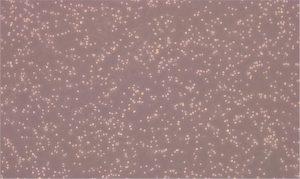The Lonza Bioscience Scientific Support team reports and comments on the latest news about our technologies and customer applications.
- Tools and protocols for best practice of your experimental set up
- Review of research highlights with Lonza’s Bioscience products
- Technology trends and featured applications
- Learn from us and our customers

CRISPR in the Classroom
The CRISPR (clustered regularly interspaced short palindromic repeats) – CAS (CRISPR associated protein) system is a prokaryotic adaptive immunity mechanism. Emmanuelle Charpentier and Jennifer A. Doudna adapted this system as a tool for gene editing experiments, for which they became the winners of the Nobel Prize 2020 in Chemistry. This new revolutionary technology has become a valuable tool in cell biology.
Students at the School of life sciences and environmental technologies of Avans University of Applied Sciences (Avans UAS, Breda, NL) are trained to become lab-technicians and thereby these students need to learn lab technologies, including CRISPR/CAS. In a newly developed CRISPR course, students of Avans UAS learn the basics of CRISPR/CAS and the use of the CRISPR/CAS toolbox, both in theory and practice. For the practical session on gene editing, a model system developed by Glaser et al. in 2016 is being used. This experiment uses the chronic myeloid leukemia cell line K562 expressing EGFP. A guide RNA was developed in order to either knock-out (Non-Homologous End Joining; NHEJ) the EGFP gene (i.e. green light off), or, using a donor template, to convert EGFP to BFP (Homology Directed Repair; HDR; i.e. green light becomes blue light). A pX330 plasmid was used for expression of both the Cas9 protein and sgRNA in these eukaryotic cells. The plasmid was transfected into K562 cells using the Nucleofector® 2b Device with the program T-016 according to the Lonza Optimized Protocol. This hands-on experience resulted in up to 60% K562-EGFP knock-out cells (via NHEJ) and up to 5% of K562-BFP positive cells (via HDR). Our students, who use this technology for the first time, were able to obtain reproducible results! Furthermore, 3rd year students now attempt to improve the NHEJ/HDR ratio using small molecules that inhibit enzymes involved in the NHEJ pathway. These combined experiments show our students how to use the CRISPR/CAS system in gene editing experiments. For the near future, new model experiments will be developed by internship students of the research group analysis techniques in the Life Sciences of Avans UAS, to further teach students other CRISPR/CAS toolbox options to keep them up to date in this exciting field of biology!




